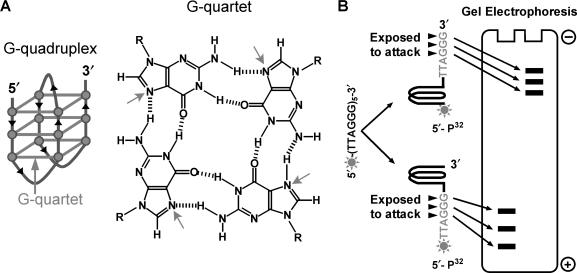Figure 2.
Schematic illustration of quadruplex and the principle of quantifying quadruplex formation at different positions by DMS footprint. (A) (TTAGGG)4 can fold back to form G-quadruplex structure hold together by three stacked G-quartets. The Hoogsteen hydrogen bonding between adjacent guanines prevents the N7 position (arrowed) from methylation by DMS. (B) The position at which quadruplex forms determines whether a G triplet (GGG) is exposed to or protected from attack by DMS and the size of cleavage product. In a five-repeat sequence, for example, quadruplex at the very 5′ end will produce 32P-labeled fragment four repeats larger than that produced by quadruplex at the very 3′ end.

